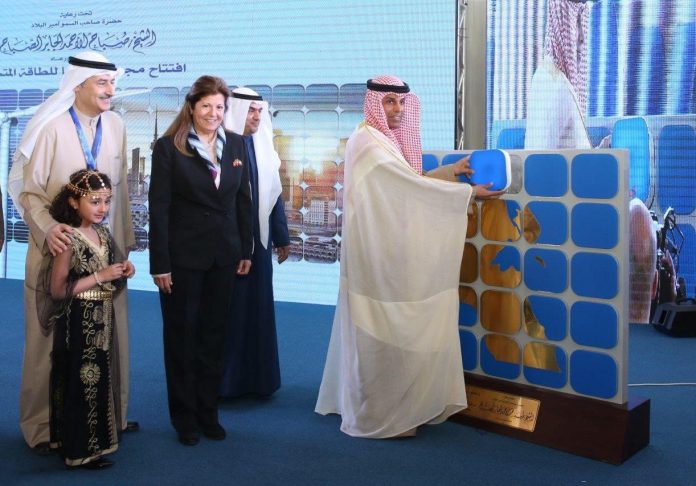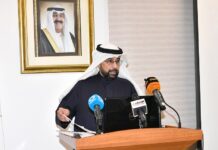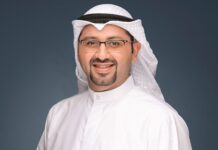Minister of Oil, Electricity and Water Dr. Khaled Al-Fadhel has affirmed that Kuwait is relentlessly taking strides for harnessing renewable energy. Kuwait is seeking to ensure that renewable energy covers 15 percent of its utilized energy by 2030, the minister said, singling out Al-Shaqaya Renewable Energy Project.
The minister was speaking during a ceremony, organized by Kuwait Institute for Scientific Research (KISR), inaugurating the first phase of Al-Shagaya project, under patronization of His Highness the Amir Sheikh Sabah Al-Ahmad Al-Jaber Al-Sabah. H.H. the Amir, at the 2012 United Nations Climate Change Conference, hosted by Doha, Qatar, affirmed Kuwait’s interest in renewable energy. His statement constituted guidelines for all state sectors to move forward in harnessing this emerging energy source. In line with H.H. the Amir vision at this level, the Cabinet had formed a higher commission, headed by the Minister of Electricity and Water, with membership of Kuwait University, KISR, Kuwait Foundation for Advancement of Sciences (KFAS), Ministry of Public Works, along with other departments, to compel contractors, in future ventures, to equip installations for securing at least 10 percent of needed energy from renewable resources. There are other projects for securing renewable energy; namely Al-Dabdaba solar energy venture.
Moreover, the state, he continued, specialized 630,000 square meters of land for establishing solar energy facilities. These ventures are also in harmony with Kuwait’s adherence to the UN policy of tackling climatic change according to the UN Convention on Climatic Change and the Kyoto protocol, said Minister Al-Fadhel. Samira Al-Sayed Omar, KISR’s Director General, said H.H. the Amir, in 2010, instructed KFAS to grant KISR KD one million (US$3.3 million) to cover costs of feasibility studies to generate energy from renewable sources – thus these studies constituted the basis of this complex. KISR has based its projects in this sector on H.H. the Amir’s instructions that renewable energy should cover 15 percent of the country’s needs for power by 2035. Omar announced that the complex would be operated, today, at a capacity of 70 megawatts – linked up with the conventional power network.
The generated power comes from solar, wind, thermal and electro-optic resources. This complex is capable of securing power for 1,000 residential units throughout the year. It is highly feasible for it enables Kuwait to save more than 285,000 barrels of oil per year. Moreover, Omar continues, it provides work opportunities, minimizes emissions of carbon dioxide at a proportion of five million tons per year. Meanwhile, Badr Al-Rifaee, the assistant general secretary at the higher planning council, affirmed that the key project contributed to the strategic approach of minimizing dependence on oil for state income.
Mohammd Boushehri, the electricity undersecretary, said the project is the largest at the Gulf level, indicating at a plan to establish a station of 1,500-Mega solar energy.

















